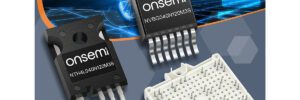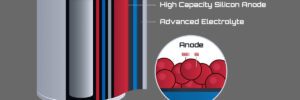
Uber’s subdivision, named Uber Freight, is now a Tesla Semi customer. The transportation, logistics, and supply chain company has taken its first step towards EV adoption for its heavy-duty commercial trucks.
Uber Freight announced the news of including Tesla Semi class-8 electric haulers into its logistics fleet on LinkedIn and Elon Musk’s X (formerly Twitter). However, the company did not disclose the exact number of Tesla Semi-truck units it acquired in the first phase of this transition.
A partnership between Tesla and Uber is a surprising one, as both companies are now competitors in the ride-sharing business, especially autonomous ride-hailing (robotaxis).
Uber Freight shared the following picture of multiple Tesla Semi-trucks at an unspecified location. These trucks are seen charging at a Megacharger station.
The location of the above picture of Tesla Semis charging is most probably Giga Nevada, where the automaker has made a dedicated manufacturing facility for its class-8 electric semi trucks. Uber Freight is headquartered in Chicago, Illinois, and there is no confirmed report of a Megacharger station in this city.
However, Tesla has planned on building 46 Tesla Semi Megacharger stations across the US by 2027. This charging infrastructure will enable companies like Uber Freight to run their logistics and supply chain operations smoothly across states.
For logistics freight operators, Uber and Tesla are offering Tesla Semi-trucks at a subsidized price. This means a lower upfront cost for companies and Uber Freight partners.
In its official announcement, Uber Freight wrote:
Uber Freight and Tesla are reshaping how fleets electrify.
The new Dedicated EV Fleet Accelerator Program with Tesla is designed to make EV adoption practical and profitable by tackling the two biggest hurdles: cost and utilization. Carriers in the program gain:
– Subsidized Tesla Semis with recognized Total Cost of Ownership savings
– Dedicated freight demand through Uber Freight
– A direct path to serve shippers seeking zero-emission transportBy addressing these challenges head-on, we’re making it possible for carriers to adopt EVs with confidence and realize benefits from day one.
With years of experience deploying electric trucks on real routes, Uber Freight is building on that foundation to advance a smarter, more efficient freight ecosystem.
Above graph: Tesla Semi cost-savings with mileage up to 800k miles. Source: Tesla Internal Data and Modeling. Credit: Uber Freight (Uber Technologies Inc.).
The interesting fact is that, besides being more reliable and compared to diesel trucks, Tesla Semi is also cost-effective both in fuel efficiency and maintenance.
The graph above shows that a Tesla Semi-truck can save you up to $300K over the course of 800,000 miles of usage. This also shows that Tesla’s electric hauler can last up to 1 million miles ideally.
Tesla Semi also reduces stress for drivers, owners, and fleet operators by eliminating regular engine maintenance.
Senior Manager of the Tesla Semi Program, Dan Priestly, wrote on LinkedIn:
Semi can drop into freight lanes with no compromises at lower operating costs. With Uber Freight matching shippers + carriers and removing revenue and utilization uncertainty, EV adoption will accelerate as operators realize the cost and maintenance benefits Semi offers.
===
Featured image: Nic Cruze Patane / X (Twitter).
Note: This article was published earlier on Tesla Oracle. Author: Iqtidar Ali.




